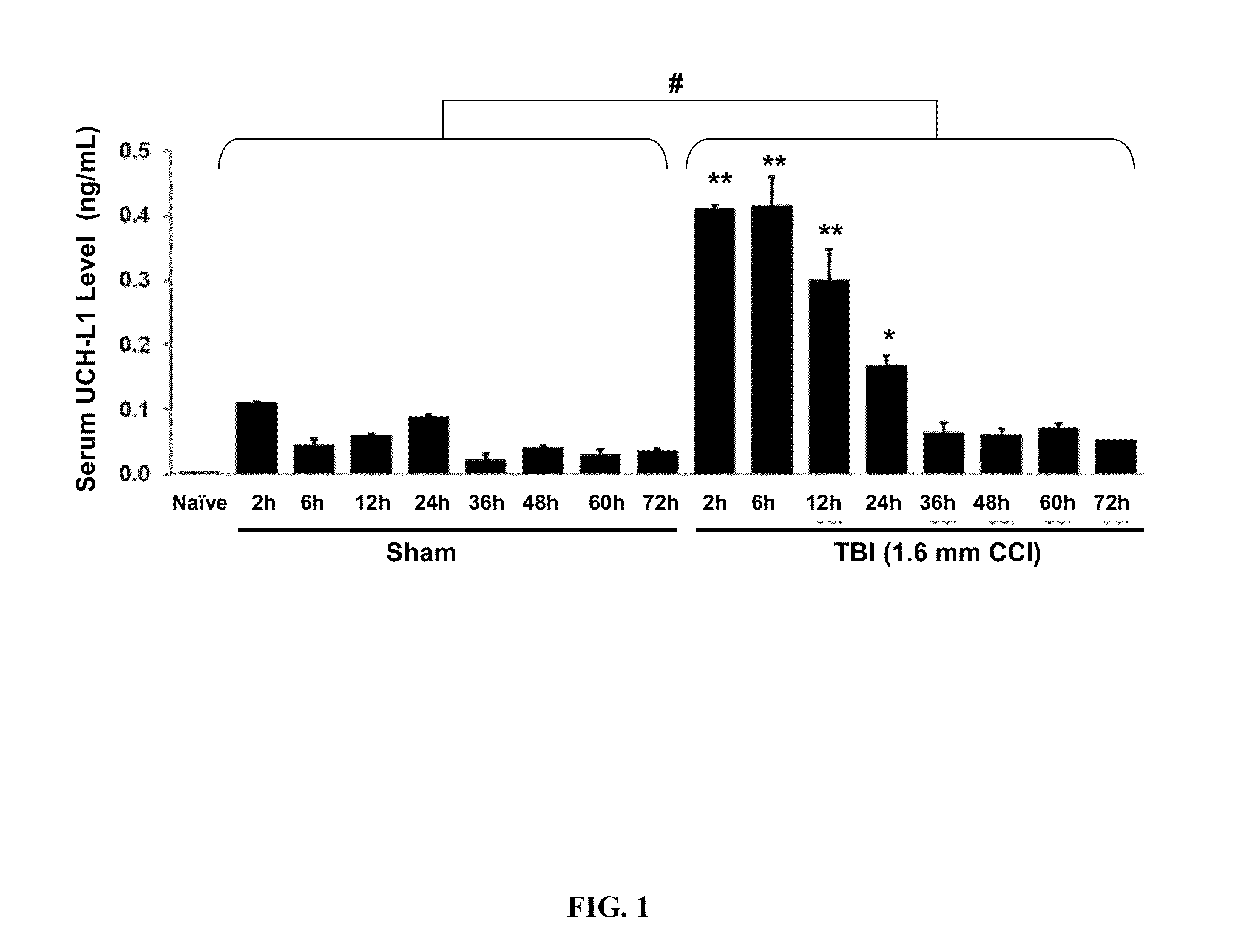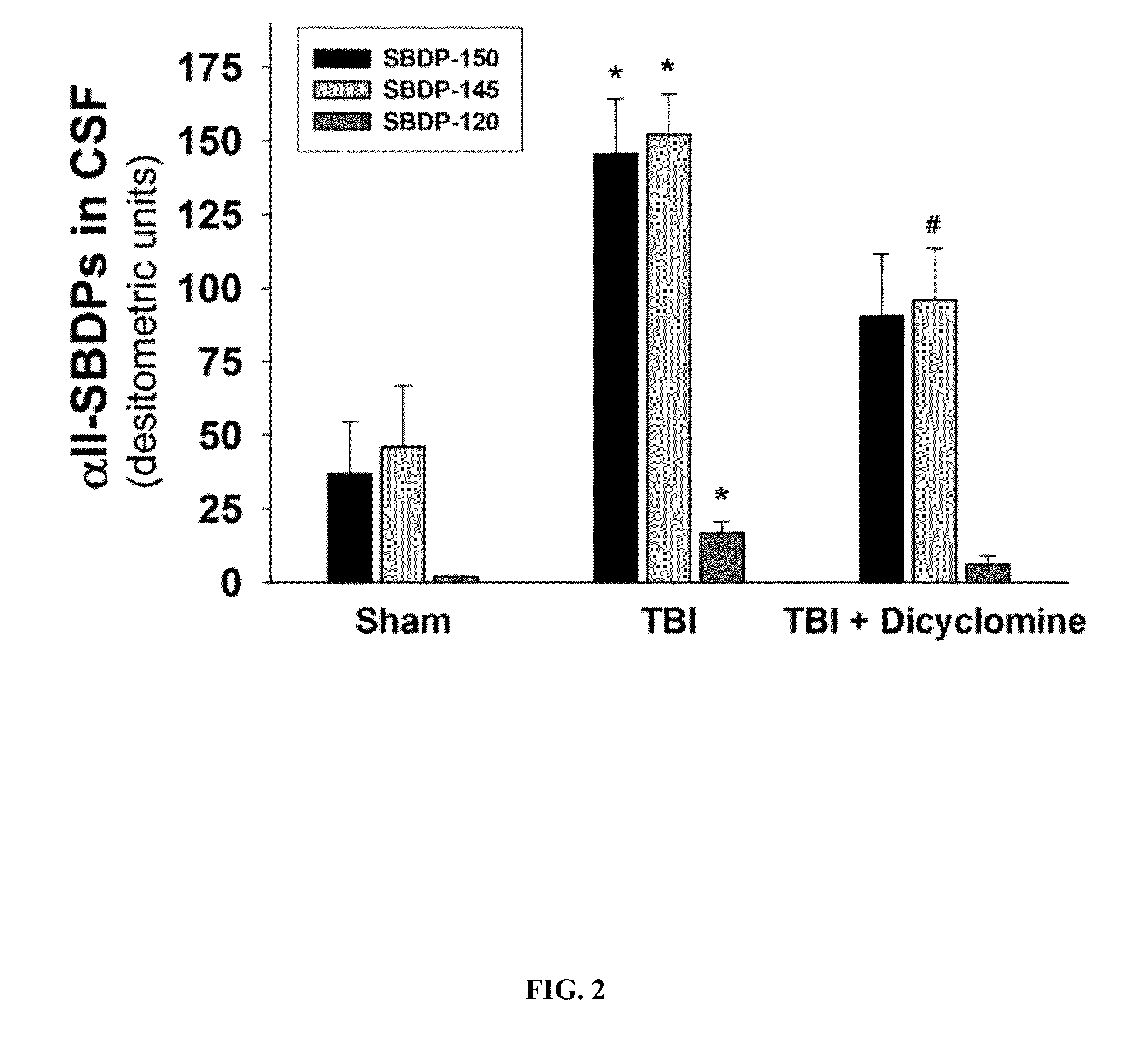Devices and methods for biomarker detection process and assay of neurological condition
a biomarker and assay technology, applied in the field of in vitro diagnostic, can solve the problems of brain damage, neurotoxic chemical insult, brain or other neurological damage, and imaging diagnostics are limited by the high cost of spectroscopic imaging and long diagnostic time, so as to achieve the effect of assisting diagnosis
- Summary
- Abstract
- Description
- Claims
- Application Information
AI Technical Summary
Benefits of technology
Problems solved by technology
Method used
Image
Examples
example 1
Materials for Biomarker Analyses
[0101]Illustrative reagents used in performing the subject invention include Sodium bicarbonate (Sigma Cat #: C-3041), blocking buffer (Startingblock T20-TBS) (Pierce Cat#: 37543), Tris buffered saline with Tween 20 (TBST; Sigma Cat #: T-9039). Phosphate buffered saline (PBS; Sigma Cat #: P-3813); Tween 20 (Sigma Cat #: P5927); Ultra TMB ELISA (Pierce Cat #: 34028); and Nunc maxisorp ELISA plates (Fisher). Monoclonal and polyclonal GFAP and UCH-L1 antibodies are made in-house or are obtained from Santa Cruz Biotechnology, Santa Cruz, Calif. Antibodies directed to α-II spectrin and breakdown products as well as to MAP2 are available from Santa Cruz Biotechnology, Santa Cruz, Calif. Labels for antibodies of numerous subtypes are available from Invitrogen, Corp., Carlsbad, Calif. Protein concentrations in biological samples are determined using bicinchoninic acid microprotein assays (Pierce Inc., Rockford, Ill., USA) with albumin standards. All other nec...
example 2
Biomarker Assay Development
[0102]Anti-biomarker specific rabbit polyclonal antibody and monoclonal antibodies are produced in the laboratory. To determine reactivity specificity of the antibodies to detect a target biomarker a known quantity of isolated or partially isolated biomarker is analyzed or a tissue panel is probed by western blot. An indirect ELISA is used with the recombinant biomarker protein attached to the ELISA plate to determine optimal concentration of the antibodies used in the assay. Microplate wells are coated with rabbit polyclonal anti-human biomarker antibody. After determining the concentration of rabbit anti-human biomarker antibody for a maximum signal, the lower detection limit of the indirect ELISA for each antibody is determined. An appropriate diluted sample is incubated with a rabbit polyclonal antihuman biomarker antibody for 2 hours and then washed. Biotin labeled monoclonal anti-human biomarker antibody is then added and incubated with captured biom...
example 3
TBI Patient Samples
[0103]Subjects with suspected TBI are enrolled at several investigational sites globally. All Subjects receive standard of care treatment when presenting to the investigational site. Biological samples of blood, urine, saliva and CSF are collected from the subjects at specified timepoints. Inclusion criteria for the Subjects include 1) The Subject is at least 18 years of age at screening (has had their 18th birthday) and no more than 80 years of age (did not have their 81st birthday); 2) the Subject received an accelerated or decelerated closed injury to the head (this includes head injuries inflicted by blunt force mechanism) self-reported or witnessed; 3) the biological samples of blood urine and saliva are able to be collected within four (4) hours after injury; 4) the Subject is admitted with an initial Glasgow Coma Scale score of 3-8 (severe TBI), or from 5-15 (mild or moderate TBI); 5) the Subject is willing to undergo a computerized tomography (CT) of the h...
PUM
 Login to View More
Login to View More Abstract
Description
Claims
Application Information
 Login to View More
Login to View More - R&D
- Intellectual Property
- Life Sciences
- Materials
- Tech Scout
- Unparalleled Data Quality
- Higher Quality Content
- 60% Fewer Hallucinations
Browse by: Latest US Patents, China's latest patents, Technical Efficacy Thesaurus, Application Domain, Technology Topic, Popular Technical Reports.
© 2025 PatSnap. All rights reserved.Legal|Privacy policy|Modern Slavery Act Transparency Statement|Sitemap|About US| Contact US: help@patsnap.com



